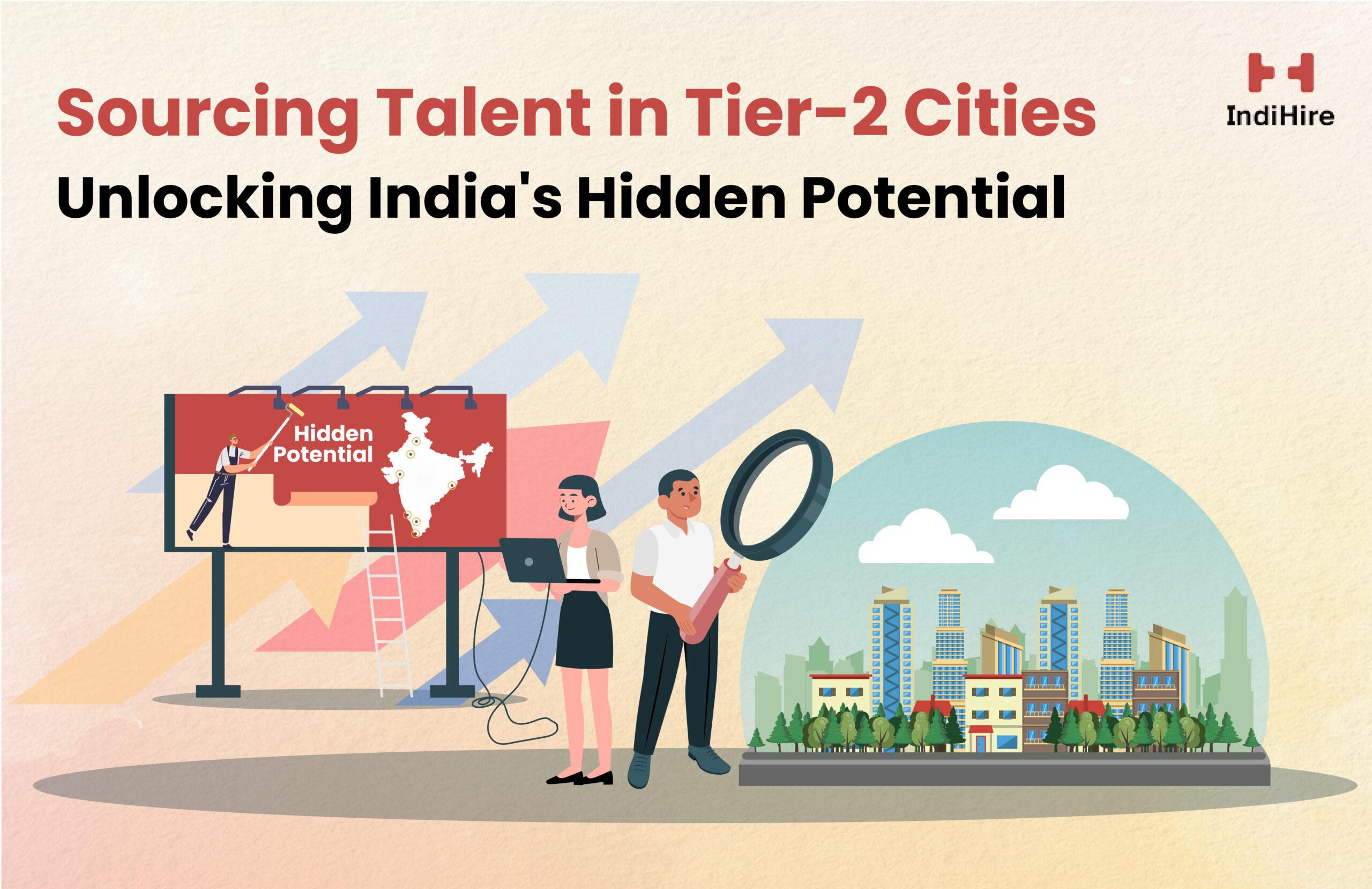Sourcing Talent in Tier-2 Cities – Unlocking India’s Hidden Potential

Reading Time: 6 min
A while ago, everyone thought talent only lived in Bangalore’s traffic jams or Gurgaon’s towering corporate parks. But India’s next wave of innovation is not stuck in traffic jams. It is getting ready to revolutionize in places you might not expect.
GCCs are finally waking up to what local entrepreneurs have known for years: tier-2 cities are not just “backup options”. They are goldmines waiting to be discovered.
However, you cannot simply copy and paste your Bangalore playbook and expect magic to happen in Coimbatore or Ahmedabad. Let’s talk about how you can actually build stellar teams in these emerging hubs.
Why Tier-2 Cities?
The thought of setting up shops outside the big four metros feels like uncharted territory. But while you are fighting over the same talent pool in Bangalore, where attrition rates make you question your company culture, there is an entire generation of skilled professionals in tier-2 cities who are hungry and ready to prove themselves.
The economics are pretty straightforward.
- Real estate costs? A fraction of what you are paying in Mumbai.
- Salary expectations? Competitive, but not astronomical.
- Employee retention? People in tier-2 cities actually want to stay close to home.
But it is not just about cutting costs. These cities are producing quality talent from reputable institutions, and many professionals who left for metros are now returning home with impressive experience.
You are not settling for less. You are getting more for less, which is basically the dream of TA professionals.
The Tier-2 Talent Landscape
Before you dive in, let’s set realistic expectations. Tier-2 cities are not mini-Bangalores. They have their own flavour, their own rhythm, and their own challenges.
The Good News
Technical skills? They are there. Cities like Ahmedabad, Coimbatore, and Thiruvananthapuram have solid engineering colleges churning out graduates who are technically sound. Many have worked with startups or mid-sized companies, so they understand hustle. Plus, there is a growing population of returning talent – professionals who grind in metros and are returning home with global exposure and experience.
The work ethic tends to be grounded. We are talking about professionals who value stability, show genuine loyalty, and are not constantly shipping their resumes to recruiters every few months.
The Reality Check
Here’s where things might get tricky. Exposure to cutting-edge technologies or global processes may be limited. Your talent pool, while skilled, may need upskilling in niche areas. The startup culture and fast-paced innovation mindset might need some cultivation.
And the elephant in the room, some candidates might initially lack the polish or communication skills you are used to in metro hires. But that’s fixable. Raw talent plus proper training equals exceptional outcomes.
Rethinking Your Sourcing Strategy
This is where most GCCs mess up. They approach tier-2 hiring like they are still in Pune, and then wonder why response rates are disappointing.
Build Local Partnerships That Actually Matter
You need boots on the ground, not just job postings. Partner with local engineering colleges, polytechnics, and training institutes. Sponsor hackathons. Run coding competitions. Show up at campus placement drives. Make your presence felt beyond LinkedIn notifications.
Work with local employment exchanges and staffing partners who understand the regional dynamics. They know which neighbourhoods produce the best talent, which colleges have the strongest departments, and which candidates are worth the long-term investments.
Tap Into the Reverse Migration Trend
This is your secret weapon. Countless professionals left tier-2 cities for better opportunities but dream of returning home. They are stuck because they assume no good opportunities exist back home. Prove them wrong.
Create targeted campaigns aimed at professionals originally from these cities who are currently working in metros. Use geo-targeting on LinkedIn. Run “Come Home” campaigns that appeal to their desire for better work-life balance, lower living costs, and proximity to family.
Community Engagement is Not Optional
In tier-2 cities, reputation travels fast. Become part of the local ecosystem. Sponsor tech meetups. Host workshops. Contribute to local causes. When your GCC becomes known as “that great company everyone wants to work for”, your sourcing challenges decrease significantly.
Attraction and Retention: Playing a Different Game
The factors that attract talent in Bangalore might not move the needle in Bhubaneswar, and you need to recalibrate.
Compensation With Context
You can offer lower salaries than metros, but do not be cheap. Benchmark against local standards, but also consider the metro premium. You can offer 70-80% of metro salaries, and suddenly, you are the employer of choice.
Think beyond base pay. Housing allowances mean more here because people actually dream of owning homes, not just renting. Education allowances for kids? That’s gold. Health insurance that covers parents? You just won hearts.
Career Growth That’s Visible and Real
The biggest fear in tier-2 cities is career stagnation. You need to address and combat this aggressively. Create clear growth paths. Offer rotational opportunities across your global locations. Invest heavily in upskilling programs.
Bring global leaders to these offices regularly. Let your tier-2 team members be a part of global forums. Show them they are not in the “minor league” – they are playing the same game, just from a different stadium.
Workplace Experience That Competes
Your tier-2 office cannot look like a cheap knockoff. Infrastructure matters. Build facilities that rival your metro centres. Invest in collaborative spaces, recreation areas, and modern tech.
Flexibility is your friend here. Many professionals in tier-2 cities manage family responsibilities that metros do not understand. Offer genuine work-life balance, flexible hours, and hybrid models where possible.
The Long Game
Quick wins are great, but sustainable success requires long-term thinking.
Set up internship programs. Offer pre-placement training. Create apprenticeship models. Essentially, grow your own talent from scratch. It takes time, but the loyalty payoff is incredible.
Invest in continuous learning programs. Partner with online learning platforms. Create internal certification programs. Make your GCC known as the place where careers accelerate.
Build an employee value proposition that resonates locally. What matters to someone in Thiruvananthapuram might differ from someone in Hyderabad. Customize your messaging. Tell stories of local success. Make heroes of your tier-2 employees.
The Bottom Line
Sourcing talent in tier-2 cities is not a compromise – it is a strategy. But only if you do it right. You cannot treat it as “cost optimization”, and you definitely cannot apply metro strategies here.
These cities offer incredible potential: talented professionals, better economics, lower attrition, and communities hungry for opportunities. But unlocking that potential requires respect, investment, and adapting to local dynamics.
Stop seeing tier-2 cities as backup plans. Start seeing them as untapped markets full of professionals who could become your most valuable assets. Build the right infrastructure, craft the right narrative, and commit to the long haul.



